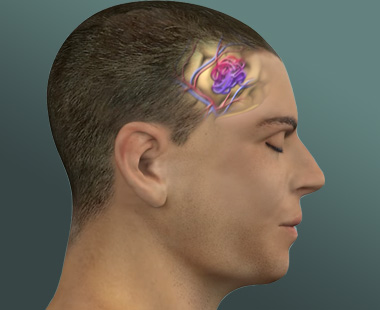
Endoscopic Procedures
- Home
- Endoscopic Procedures
One of the biggest advances in neurosurgery over the past decade has been the development of endoscopic techniques for treating tumors in the skull base and brain. Lesions that formerly required craniotomy and brain retraction are now being accessed directly via natural pathways through the nose and sinuses.
During this procedure, thin tubing that transmits video images of the brain is inserted through one or two small incisions in the skull or through an opening in the body. This tube-like instrument, called an endoscope, contains a small camera that allows the neurosurgeon to see detailed images of the problem area in the brain.
The neurosurgeon will use the images transmitted by the endoscope as a guide for removing the tumor or repair the affected area of the patient’s brain. The removal of the tumor or damaged area is performed with specialized surgical instruments.
What are the Benefits of Endoscopic Brain Surgery?

What is head injury?A traumatic brain injury, also referred to an acquired brain injury, occurs when someone suffers a sudden…
read more
What is Brain Aneurysm?Brain aneurysm is an abnormal bulge in the brain's blood vessel. When it leaks or ruptures, it…
read more
What is a brain arteriovenous malformation ?Normally, arteries carry blood containing oxygen from the heart to the brain, and veins…
read more
What is Hydrocephalus?Hydrocephalus is commonly referred to as "water on the brain." The so-called "water" is actually cerebrospinal fluid (CSF),…
read more